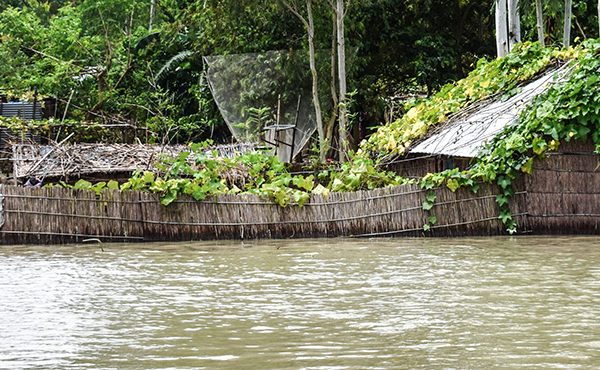The growing water gap in Dhaka, one of the world’s fastest growing cities
Reading Time: 3 minutes
Dhaka is facing an impending water crisis. What can we do about it? BRAC Institute of Governance and Development’s latest State of Cities report focuses on water governance, how we use water and what the future of water in Dhaka looks like.
How many glasses of water do you drink per day?
While the number may be easy to recall, is it likely not as easy to recall your daily water usage? Probably not.
Most of us don’t pay much attention to our overall use of this vital resource – and we use a lot of it, as confirmed in BRAC Institute of Governance and Development’s latest State of Cities report focusing on water governance.
The report showed that we could be looking at a major water crisis in the near future if Dhaka’s current water usage levels continue.
Dhaka is home to 17 million people, and this number is growing. Government estimates show that the city’s population rises by 1,400 people every day.
Dhaka Water Supply & Sewerage Authority (WASA) recommends that each person in Dhaka uses 150 litres of water per day. The State of Cities report shows that each person living in formal housing in Dhaka uses an average of 310 litres per day, or double this amount. On the other hand, people living in informal housing use an average of 85 litres per day, or half this amount.
There is a significant gap in terms of access to water in Dhaka, with people living in formal housing using three times more water than those in informal housing.
WASA provides formal water connections to those living in slums, but currently only 11%-16% of total informal settlements are covered. Those who do not have access to the connections pay at least double the regular price for water.
The people with the least capacity to pay face the highest prices for water in Dhaka.
Income affects water usage. People use more water as their income rises. The report shows that water usage is 192 litres per day when monthly income is below BDT 3,000, which rises to 441 litres per day when monthly income is BDT 9,000. As per-capita income continues to rise, Dhaka’s water consumption is set to double.
Demand for water is also growing. Dhaka uses five times more water than it did 30 years ago, and summers are getting longer and hotter. Meeting increasing demand has not been done in an entirely sustainable way. More than three-quarters of WASA’s water supply is groundwater, which poses environmental risk and is expensive to maintain.

The size of Dhaka’s rivers, lakes and streams are reducing. Dhaka’s 2010 area plan had 5,523 acres of surface water. In just seven years, only 30% of those areas remain, according to a 2017 RAJUK study. Urbanisation and encroachment has also polluted the water, and a study done by WASA last year revealed that the contamination levels of Dhaka’s rivers are too high to even be treated for human use.
Water is further contaminated in rooftop and underground reservoirs, because water reservoirs in housing estates are often not cleaned properly or frequently, and people often use suction pumps, which pull mud and other contaminants from the bottom of reservoirs.
Four projects have been initiated by WASA, which are collectively expected to supply 1,700 million litres of treated water daily from the Padma and Jamuna rivers. Implementation progress has been slow, however.
The time is now to take action if the city is to avoid an impending water crisis. The onus falls on individuals and households, communities, as well as public and private organisations.
Two key recommendations from the report include;
1. Implementing water metering systems into all households
In the same way that household electricity usage is metered and charged, water can also be metered and charged. This will make households aware and accountable for how much water they are using. The report found that 61% of users are willing to pay for the amount of water they use.
2. Improve testing at distribution points, and take measures to reduce household level contamination
Regular, random water quality tests can be introduced at distribution points, both by WASA as well as on a community level. This will help to identify issues at the supply level. Use of suction pumps can be discouraged, and better systems for timely and proper cleaning of reservoirs can be encouraged, which will help to remedy issues at the household level.
Stricter implementation of existing laws around water governance can also play an important role in managing the water systems in Dhaka, and establishing a coordinating agency to oversee compliance will help.
Water is life. Better water governance is vital for the future of Dhaka, to ensure that the capital can sustainably grow into a prosperous, liveable city for all of its citizens.
Luba Khalili is a deputy manager at BRAC Communications. Sarah-Jane Saltmarsh is the head of programme and enterprise communications, BRAC Communications.





